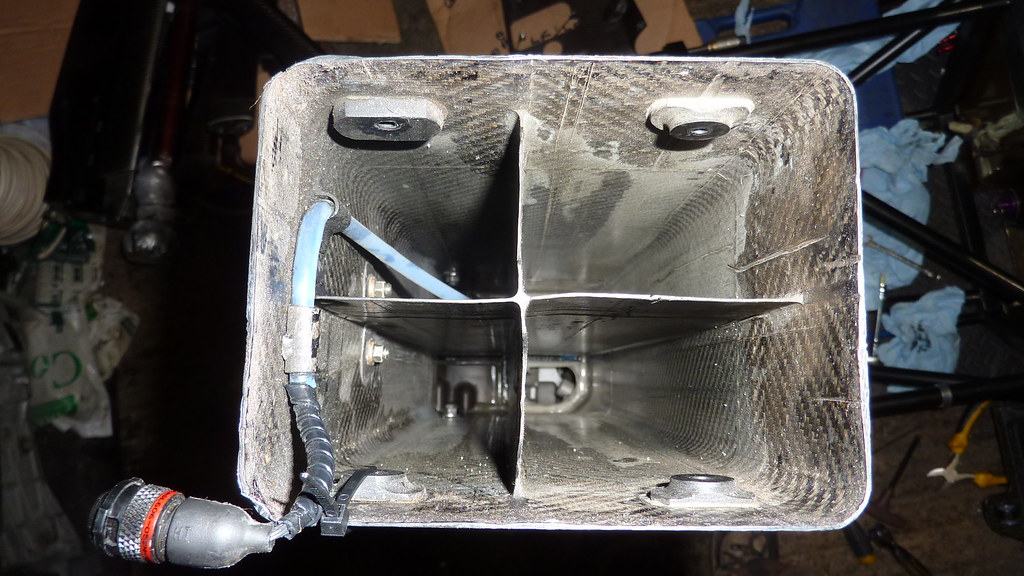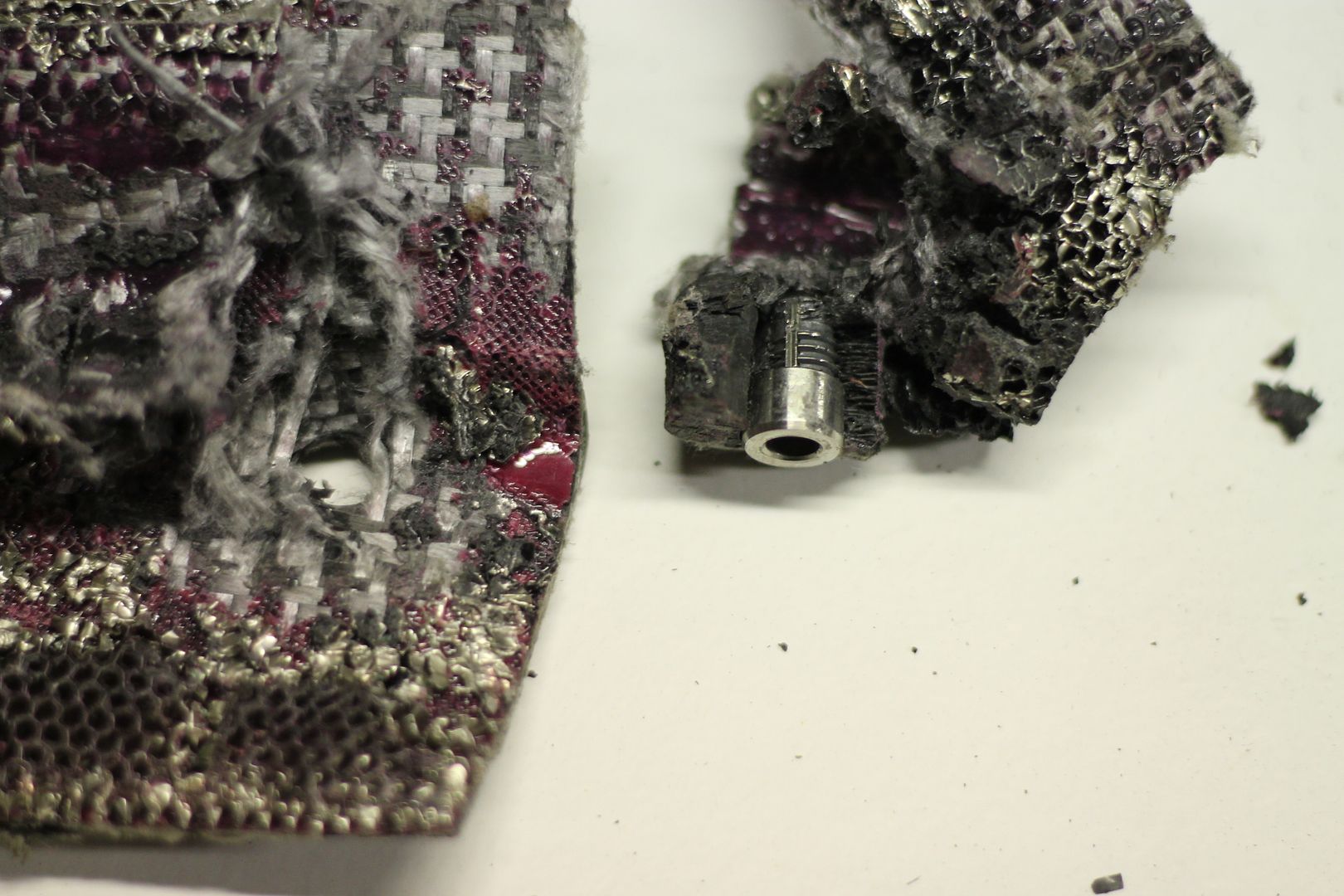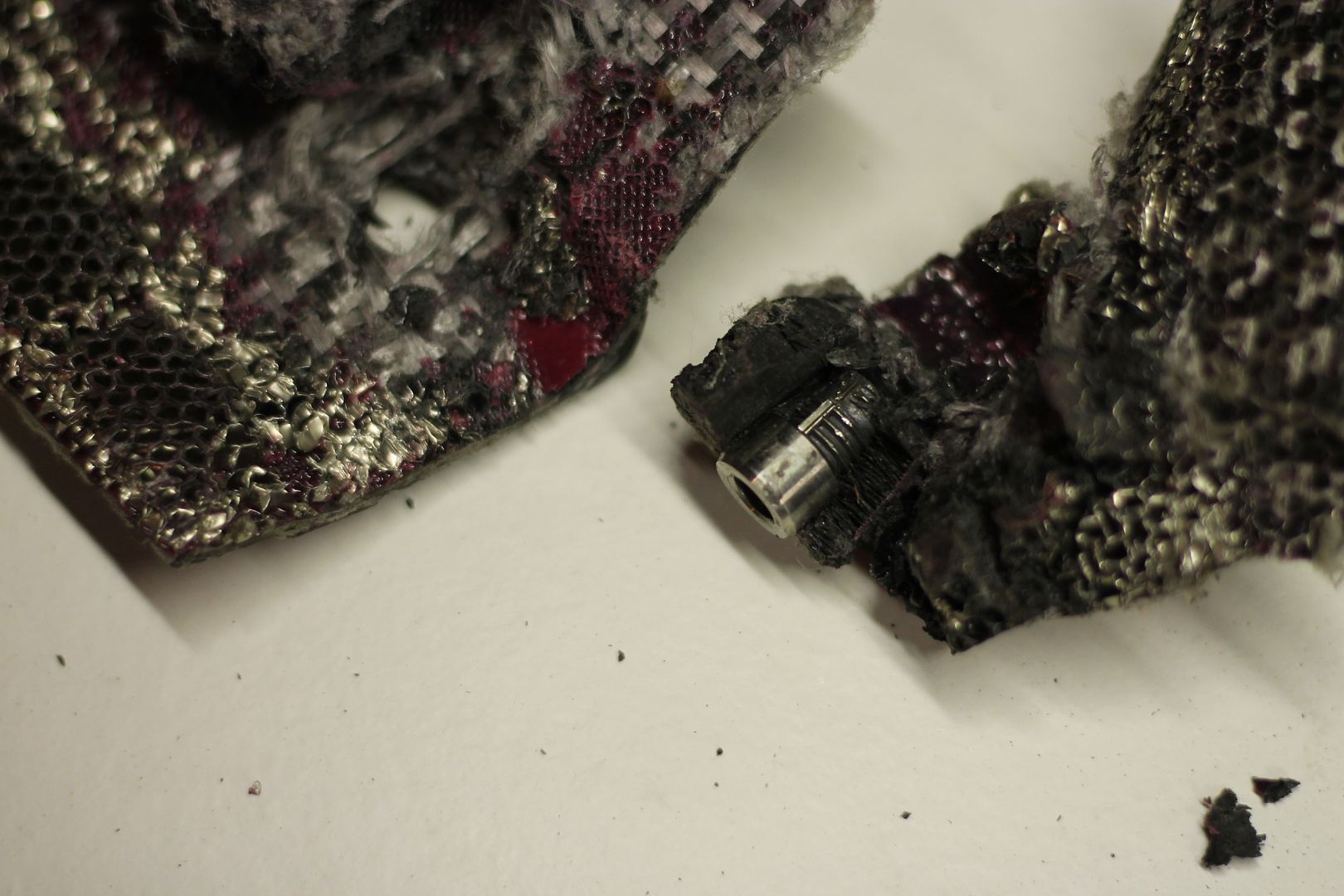I just took a second look at the pictures and realized I hadn't noticed there are two different orientations of the honeycomb. To be clear, I was referring to the inner-most section where the hollow cores are oriented longitudinally with respect to the car. The two outer-most layers of honeycomb are for additional bending strength, similar to the honeycomb core used in the rest of the monocoque. It's interesting to see that there are essentially two honeycomb sandwiches used.
The goal with the crash structure is to absorb as much energy as possible without transferring it to the car and driver. Ideally, the outer two layers would absorb just enough energy so that the inner core doesn't get annihilated and can still perform its intended task. I guess the engineers calculated that the 3 layers of carbon layup, along with their 2 accompanying honeycomb layers, was just enough to be able to take some of the load off the inner honeycomb core while still not transferring too much energy to the driver.
- Login or Register
No account yet? Sign up




